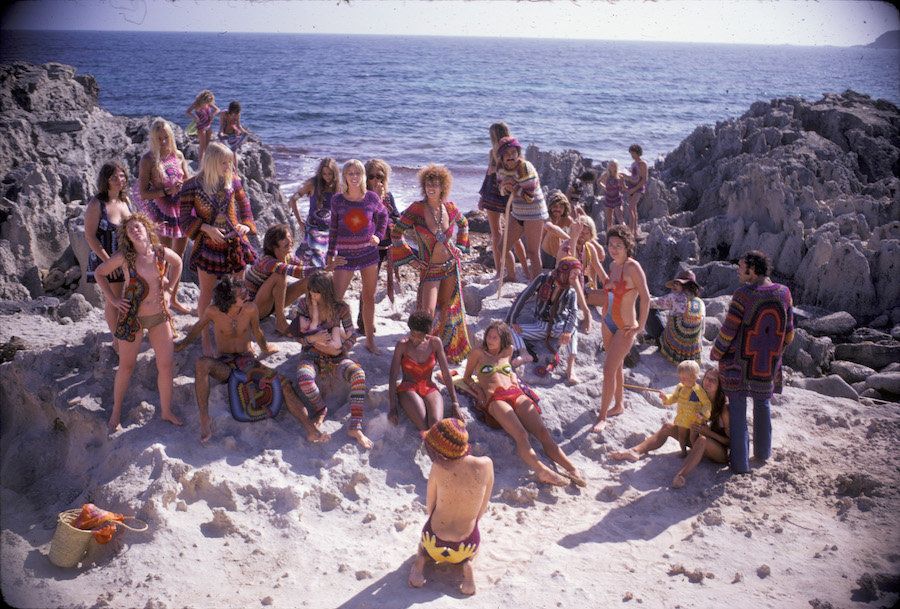“Dressing yourself for yourself is an activist act,” Fayette Hauser told The Huffington Post. “We felt that we were part of the revolution.”
Hauser was a member of The Cockettes, a San Francisco-based commune and creative collective John Waters once described as “hippy acid freak drag queens.” They were recognizable by their threads, which took inspiration from drug-fueled visions, foreign cultures, bygone eras and personal fantasies, amounting to hallucinatory ensembles that served as embodied rejections of mainstream America.
Hauser’s iconic threads are currently on view at New York’s Museum of Art and Design, part of the exhibition “Counter-Couture: Handmade Fashion in an American Counterculture.” The show revisits the mind-warping fashions of the 1960s and 1970s that, in defiance of the consumerism-laced American Dream, opted to dream up alternative ways of dressing, protesting and being.
As curator Barbara Paris Gifford explained to HuffPost: “It was about rejecting materialist culture, not spending a lot of money. You could see something in a thrift store or in the trash and see the possibilities of what it could become, how it could express your values. It was about actively creating your own reality, instead of accepting the one that was handed to you.”

Born and raised on the East Coast, Hauser moved to San Francisco in 1968. One year later, she helped bring The Cockettes into being, an avant-garde experimental theatre troupe who, along with performing on stage, became living, breathing manifestations of their transcendent ideals.
The Cockette clan donned flowing facial hair, exaggerated makeup, glitter, jewels, furs, fishnet tights and feather headdresses, a non-categorizable onslaught of garments from a motley range of eras, locales, genders and styles. “We were in various characters of our own creation and imagination,” Hauser said.
“The mainstream was all caught up in trends,” she continued, “and we thought trends were much too shallow a reason to put something on your body, which was sacred. We were having these visions from using psychedelic drugs, and we wanted to visualize them. There was so much creative energy, everyone had gone deep into themselves through psychedelics.”
Another groundbreaking aspect of The Cockette’s living theater was their personification of gender fluidity and gender confusion. “People were embracing the male and the female inside themselves, making outfits that had both sexes in them,” said Hauser. The elaborate ensembles were sometimes dubbed “high drag,” in that they transgressed not only the boundaries of gender but also of reality. As Hibiscus, a founding Cockette, once said: “Instead of dressing in drag, I was dressing more as gods. We were all creating mythic figures.”
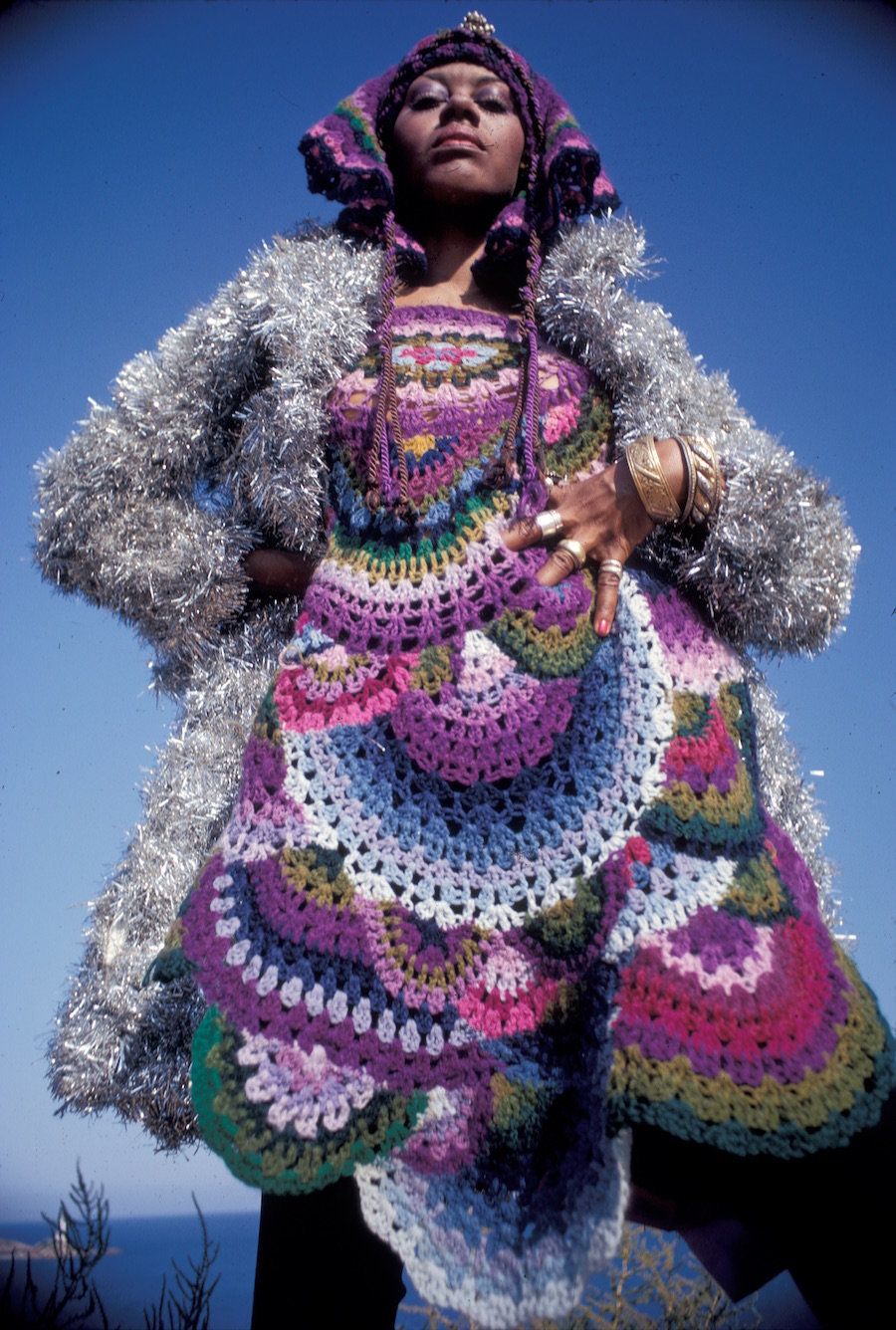
The oozing visuals induced by acid and mushrooms served as chief inspirations for artists like The Cockettes, along with countless other countercultural fashionistas who saw their bodies as sites of resistance, including Kaisik Wong; Alex + Lee; Birgitta Bjerke, and Mickey McGowan.
The pioneer of wearable art, Wong was known for his cosmic robes, gowns and headdresses whose metallic, mythical power paid tribute to the past while predicting the future. Bjerke, better known as 100% Birgitta, reportedly went nowhere without a bag of wool and crochet hooks, fashioning kaleidoscopic pastorals from the simplest of means.
These artists also, however, looked longingly to the past for visual stimuli. “We were very much looking at the past as a thing of beauty,” Hauser said. “The mainstream at the time was only looking forward. They were throwing everything away. We were looking at the past like it was great art, especially the old clothes. We had a large palette to choose from. Victoriana, art nouveau, anything vintage. We were dressing up our fantasies.”
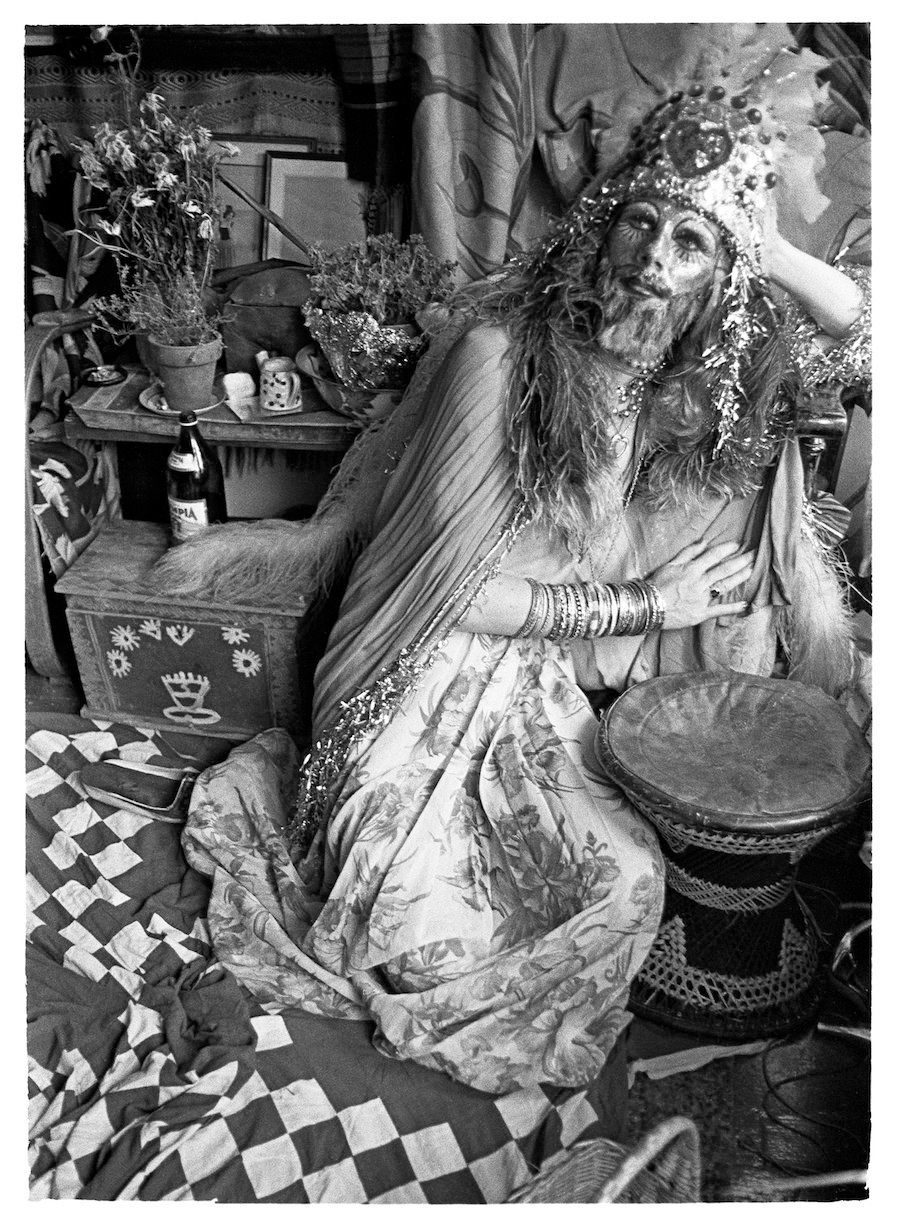
Along with mining other time periods for aesthetic gems, many countercultural visionaries of the ‘60s and ‘70s looked to other cultures, from Peruvian handwoven textiles to dashikis, which were closely associated with the black power movement at the time. This is where things get a little complicated, because, as the photographic documentation makes abundantly clear, most people associating with this particular breed of “counter-couture” were white.
“Certainly what is happening now with identity, it can come off as feeling colonialist,” curator Gifford offered in response. “But that was not the feeling in this particular time period. It was out of respect, coming from a place of empathy. The movement came from a rejection of American mainstream culture, so there was a search for what is real and what is authentic.”
Gifford also added that much of the interest in other cultures’ clothing stemmed from the handiwork that was central to their construction. “I think the handmade aspect is at the center of it,” she said. Individuals were procuring handmade skills including sewing, embroidery and crochet, both from their own families and cultures abroad.
Sharing, also, was a central concept to hippie culture, which perhaps helps explain why, for people like Hauser, incorporating aesthetics and traditions from other civilizations felt like a gesture of respect, rather than exploitation. Although the cultural appropriation rampant throughout the show can hardly be excused by good intentions, Gifford and Hauser both continued to stress that the motivation to explore other cultures and stylistic traditions was rooted in admiration.

The “Counter-Couture” exhibition is now on view in New York City, in a time that bares striking similarities to the setting from which these works emerged. Like the 1960s and 1970s, many Americans today are disheartened with the current state of affairs, distrustful of the government’s agenda, and frightened for the fate of the planet. Gifford spoke of millennials and their revived interest in handmade, spiritual and local alternatives to the mainstream.
Specifically, Gifford referenced “pussy hats” ― the pink, knitted caps that swarmed the streets during the Women’s March in January. Handmade, symbolic, defiant, controversial, the hats alluded to something greater than themselves. “It’s a place to start,” she said. “Deciding that you are going to make something that is going to reflect who you are, what your politics are. And you made it yourself; there is a power in that.”
What contemporary youth can learn from their counterculture predecessors, Gifford says, is how to weave elements of resistance into daily life. “There was a lot of protest [in the 1960s and ‘70s], but also a lot of play,” she said. “Maybe we can use that moving forward, so we’re not always dealing with angry passion that burns out on itself. You want to keep people engaged and involved. How do you do that in the long term?”
The next generation of cultural resistance can also learn from the shortcomings of their predecessors, namely, their failure to address the struggles and fantasies of people of color. The imbalance remains relevant today, with January’s Women’s March raising crucial conversations about which bodies the protest empowered and which it left further alienated. The vanguard of millennial resistance, as the 1970s efforts make plain, must work toward forging a future where women-identified people of all backgrounds have the freedom and safety to indulge their imaginations, play make believe, and build revolutions out of sparkles, yarn and velvet.
What “Counter-Couture” ultimately reveals, though, is how protest can be made more sustainable when coupled with a generous dose of play. As Gifford said: “How do you not burn out? You make it a lifestyle. I think there is a lot to learn from that.”





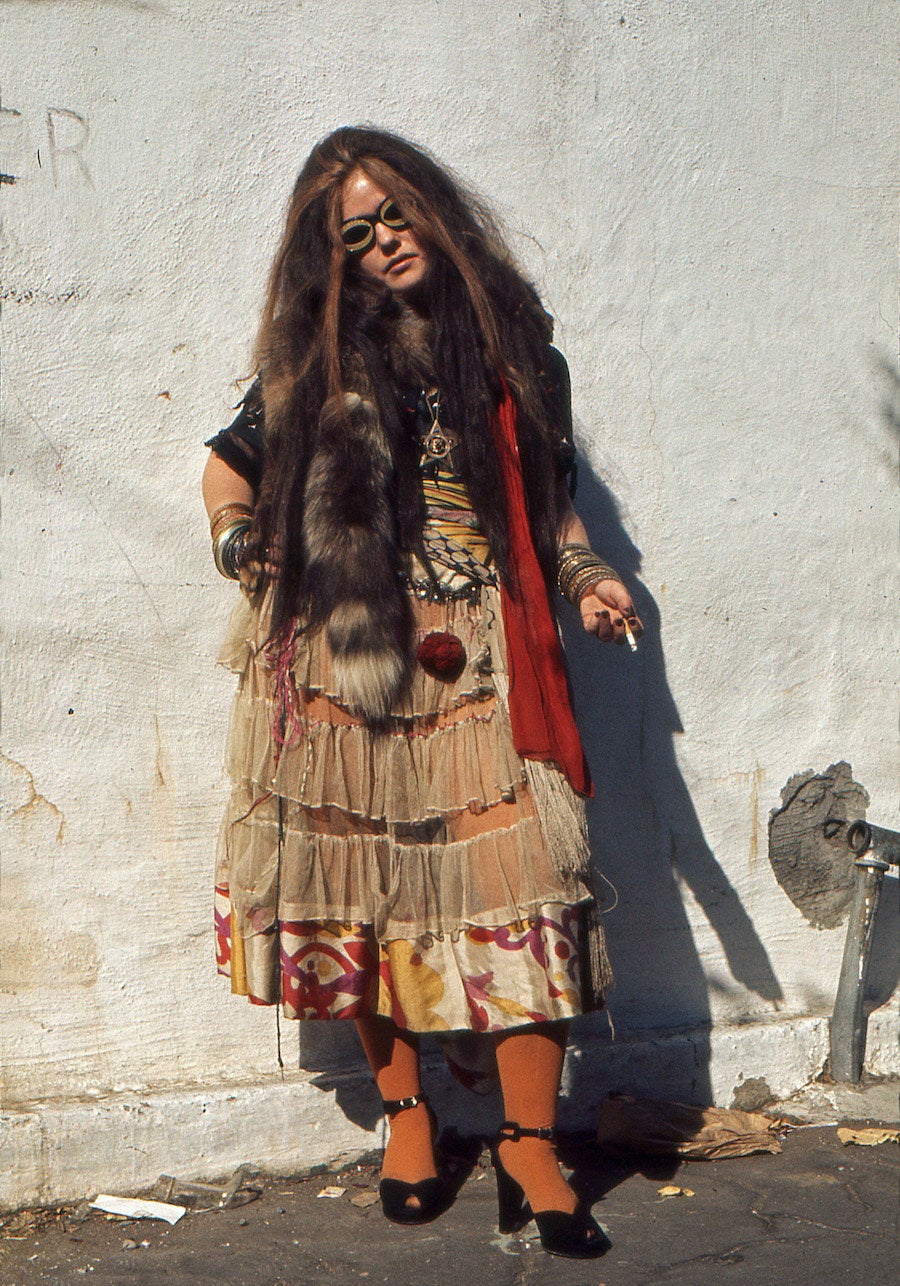

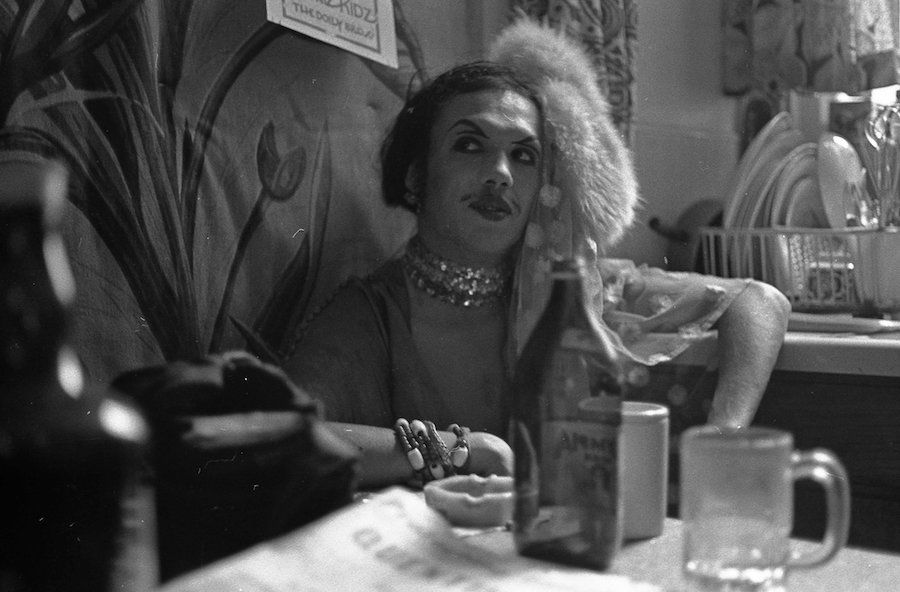





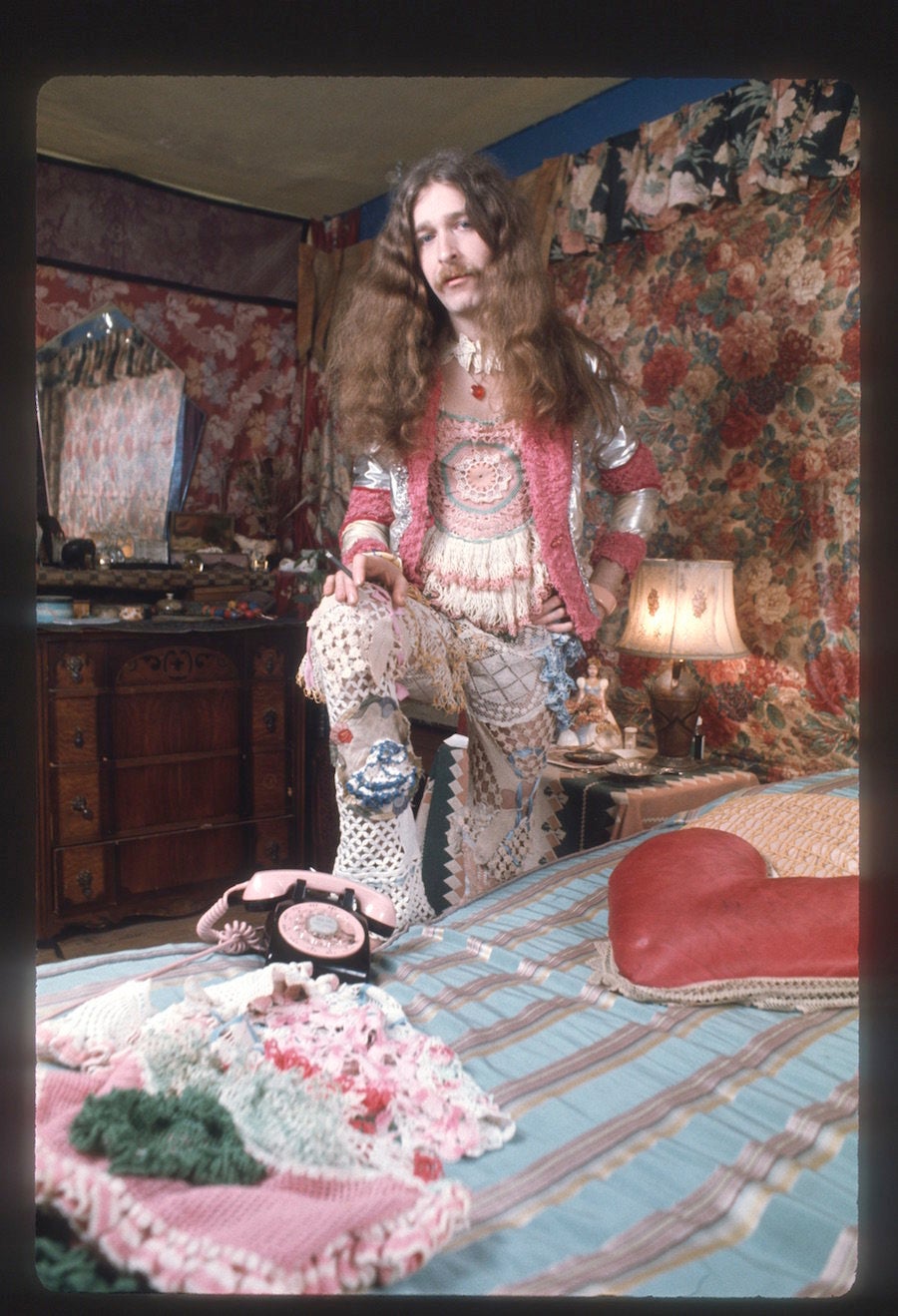





“Counter-Couture: Handmade Fashion in an American Counterculture” runs until Aug. 20, 2017 at the Museum of Art and Design in New York.
